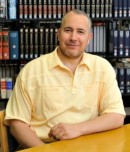|
|
Plenary
Lecture
Nanopackage Designs Based on Nanosized Mosaic Metal
Oxides: Capturing and Monitoring Hazardous and
Radioactive Agents

Professor Sherif A. El-Safty
National Institute for Materials Science
&
Graduate School for Advanced Science and Engineering
JAPAN
E-mail:
sherif.elsafty@nims.go.jp
Abstract: Environmental pollutions due to the toxic
gases, elements and pathogenic species are a serious
problem with harmful effects on plants, animals, and
human health. Achieving proper designs of nanosensors
for highly sensitive and selective detection and removal
of extremely hazardous materials is one of the crucial
issues in our laboratory. Our main interest is not only
to make nanotechnological designs-based nanomaterials
but also to reduce the production cost and to expand
their potential on-site and real-time measurements. El-Safty
and Co-workers designed of nanopackages-based mesocage
mosaic, core/double-shell, nanosheets, hollow sphere and
nanowires metal oxides for capturing and monitoring
toxic agents to protect human health and improve the
environmental quality. However, we developed rapid
easy-handling and cheap nanosensors for visual detection
and removal of toxic metals from water and wastewater
treatment systems, which are major public health
challenges in world wide. Our optical mesoporous sensors
show ability to create simultaneous designs for complete
removal of extremely toxic metals such as As(V), Hg
(II), Cd(II), Pb(II), Cr(VI), Zn(II) ions and etc..,
with indoor and outdoor responses, and with revisable,
selective and sensitive recognition of these toxic
metals. Toward the challenging subject of radiaoactive
monitoring and separation after the recent disaster of
the nuclear plants at Fukushima Diaichi, JAPAN (March,
11, 2011), El-Safty and co-workers developed simple
processing and captors-based nanomaterials for
separation of the radioactive of Iodine
(131I2),
strontium
(85Sr),
cesium
(137Cs),
cerium
(144Ce)
and cobalt
(60Co)
in aqueous and marine water. Our technology is not only
enabled the ultra-trace concentrating collection of
137Cs,
85Sr
and
131I2
radio-elements but also led to decreasing capacity, and
managing of these radioactive elements. Moreover, the
nanocapture material can be repeatedly recycled.
Significantly, the color of the nano-capture material
changes when
the radio-element is adsorbed. Therefore, it is possible
not only had to be captured the element effectively but
also to be used to detect radioactive elements by
visualization. Recently, we have successfully fabricated
nanopackage gas sensors. The patterned design based on
nanosized
WO3, Co2O3, SnO2
and
NiO
oxides enabled the detection of extremely toxic nitrogen
dioxide and volatile organic compounds VOCs. The
principal design of the nanopackages relies on the
enhancement of total-volume-exposure of sensing
materials to the analytic gases. The key component of
this design is that the gas nanosensors can offer
ultra-sensitive and selective detection of nitrogen
dioxide at a low level concentration among carbon
monoxide, and VOCs, such as acetone, benzene, and
ethanol. We expected this nanopackage sensors can
revolutionize the consumer and industrial market in
environmental pollution monitoring, transportation,
security, defense, space missions, energy, agriculture,
and medicine.
Brief Biography of the Speaker:
Sherif A. El-Safty obtained his Ph.D. in 2000 under
supervision of Professor John Evans, School of
Chemistry, Southampton University, UK. He was appointed
as a Lecturer at Chemistry Department, University of
Tanta, Egypt. In 2005, he became an Associate Professor
in the same University. From 2001 to 2007, he was
granted several positions to work at National institute
of Advanced Industrial Science and technology (AIST),
Sendai-Japan as JSPS Post-doctor, AIST Research
Scientists, JSPS Visiting Professor, respectively. In
2008, He became a Senior Researcher at National
Institute for Materials Science (NIMS), Japan, leading
an independent group of nano-dynamic materials designs (NDMD)
that actively support the goal of the nano-technological
materials for environmental cleanup system.
Concurrently, he has appointed as Professor at Waseda
University, Japan, in major Nanoscience and Nano-Engineering
in 2010. His research interests focus on the Multiple
Nano-dynamic Designs that provide efficient, one-site,
broad range processes in the same time. These processes
are in demand for security monitoring in the global
world. He developed various nanomaterials with advanced
geometrical morphologies, such as high ordered
mesoporous monoliths, mesoporous nanosheets, meso-/macro-
porous nanorods, nanotubes, nanowires, hollow spheres
and nanocomposites for environmental monitoring and
cleanup systems. He established low cost extraction
system based on nanoscale HOM (High-Order-Mesoporous
Monolith) materials of rare earth metals from urban
concentrate as secondary resources in Japan. He
successfully designed simple, easy-to-use, and reliable
nanocaptors for decontamination of radioactive elements
in Fukushima Diaiichi, Japan from water and wastewater.
His research work had received increasing interests from
the international/national scientific communities, in
addition to be highlighted in the public and scientific
Newspapers, Magazines and NHK Television for several
times.
|
|
